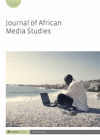
Full text loading...
 , Lali van Zuydam1
, Lali van Zuydam1 , Suzanne Franks2
, Suzanne Franks2
Since early 2020, the COVID-19 pandemic demanded ongoing media coverage unprecedented in its scope and reach. As a result, the pandemic dominated global and national news headlines for an extended period of time. Science and health journalists, and their colleagues covering other journalistic beats, were called upon to report on various aspects of the COVID-19 pandemic and many journalists found themselves in unchartered waters. To investigate the effects of the pandemic on journalists in South Africa, we adopted a qualitative approach and conducted semi-structured, in-depth interviews with twenty science, health and environmental journalists. We explored the challenges and demands that they faced, as well as how the pandemic changed science journalism in South Africa. This study highlights journalists’ capacity-building needs as identified during the pandemic and suggests ways to strengthen science journalism in the country.

Article metrics loading...

Full text loading...
References


Data & Media loading...

Publication Date:
https://doi.org/10.1386/jams_00095_1 Published content will be available immediately after check-out or when it is released in case of a pre-order. Please make sure to be logged in to see all available purchase options.